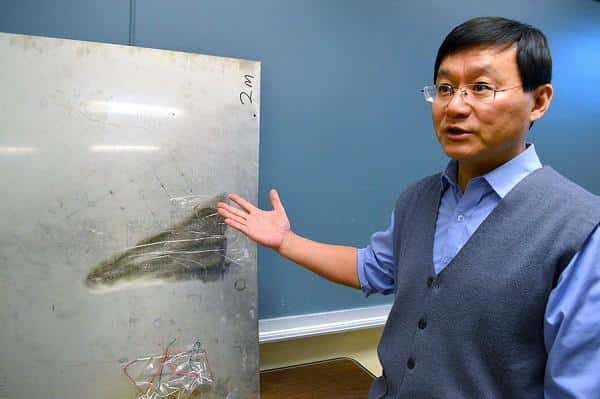In the heart ofUniversity of Missouri, a group of scientists led by Guoliang Huang has developed a metamaterial that allows surface mechanical waves to be controlled through a synthetic "fourth dimension".
This innovation is not just a theoretical exercise: it has practical applications that could revolutionize many sectors. From earthquake-resistant buildings to new frontiers in electronics, the synthetic fourth dimension opens a door to exciting and unexplored possibilities. As always, I'll link the study here.
The magic of the fourth dimension
In the three-dimensional world we live in, we are used to moving along the X, Y and Z axes. But what happens if we add a fourth dimension? No, I'm not talking about time travel or parallel universes (at least not yet!). We are talking about a synthetic "fourth dimension", a concept that allows us to manipulate surface mechanical waves in ways never seen before.
The metamaterial developed by Guoliang Huang and colleagues is composed of a “strategically modeled” elastic surface made of resonant pillars and slowly varying coupling bridges. Put simply, it's like a magic carpet for waves. This clever pattern allows the waves to move through the material without interacting with any clutter and flaws that might be there.
This is an evolution of 3D printers. In 3D printers you only check whether there is something at each point (3D). The 'fourth' dimension is the density of the material. Finely controlling 'what is there' at each point, rather than just 'if there is' something, allows us to produce objects with new characteristics. A field waiting to be explored. Of course this 4D has nothing to do with the fourth dimension of astrophysics (i.e. time).
Graziano Lo Russo's excellent comment on the Futuro Prossimo Facebook page
The number one enemy of 4D metamaterial: earthquakes
One of the most exciting uses of this material is in creating earthquake resistant buildings. As he explains Huang, “most of the energy (90%) of an earthquake is released along the surface of the Earth”.
So, imagine covering a pillow-shaped structure with this material and placing it under a building. It could help prevent the structure from collapsing during an earthquake.

But let's not stop here
Controlling waves through a synthetic fourth dimension is not just a “feel” output, it has several profound implications in the field of electronics and communications.
- Precise Wave Control: The 4D material allows unprecedented control over the path of the waves. In terms of communications, this could translate into more efficient and precise transmission of signals, reducing interference and improving signal quality.
- Miniaturization: The ability to manipulate waves in an additional dimension could lead to more compact and powerful devices. Imagine even thinner and faster smartphones and computers.
- Smart Materials: The “strategically patterned” structure of the 4D material could be used to create circuits and components that adapt and respond to external conditions. Think about devices that self-heal or adapt to your needs in real time.
- Quantum Applications: The “synthetic fourth dimension” could also have applications in the growing field of quantum computing. Manipulating quantum properties could speed up calculations and open new frontiers in cryptography and data security.
4D metamaterial, in summary
The 4D material is not just a scientific curiosity: it is a technology that could shape the future of electronics and communications, making our devices smarter and more efficient.
With a little imagination we can look at this discovery as an open door to a bright future full of possibilities.


